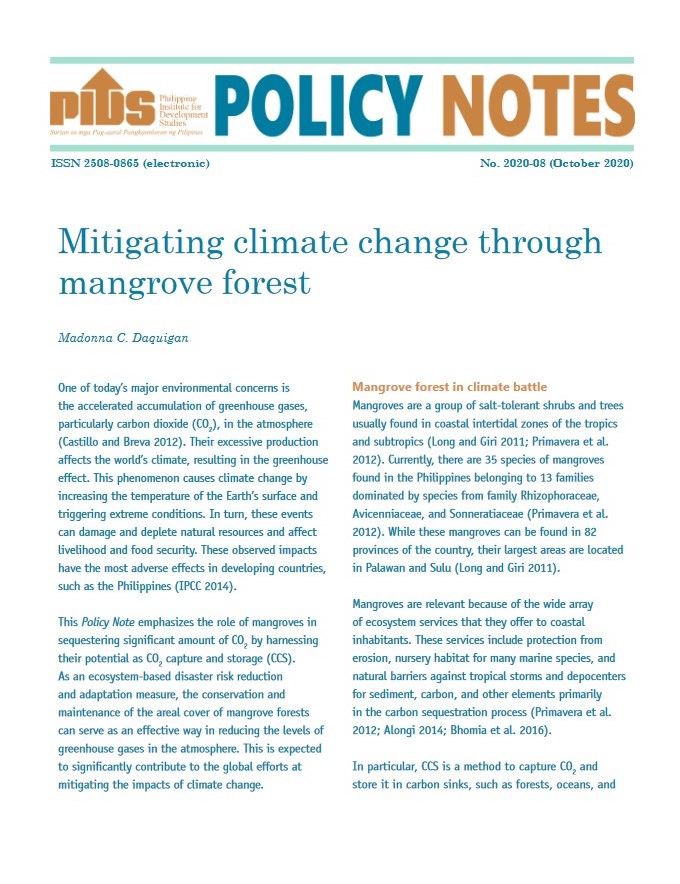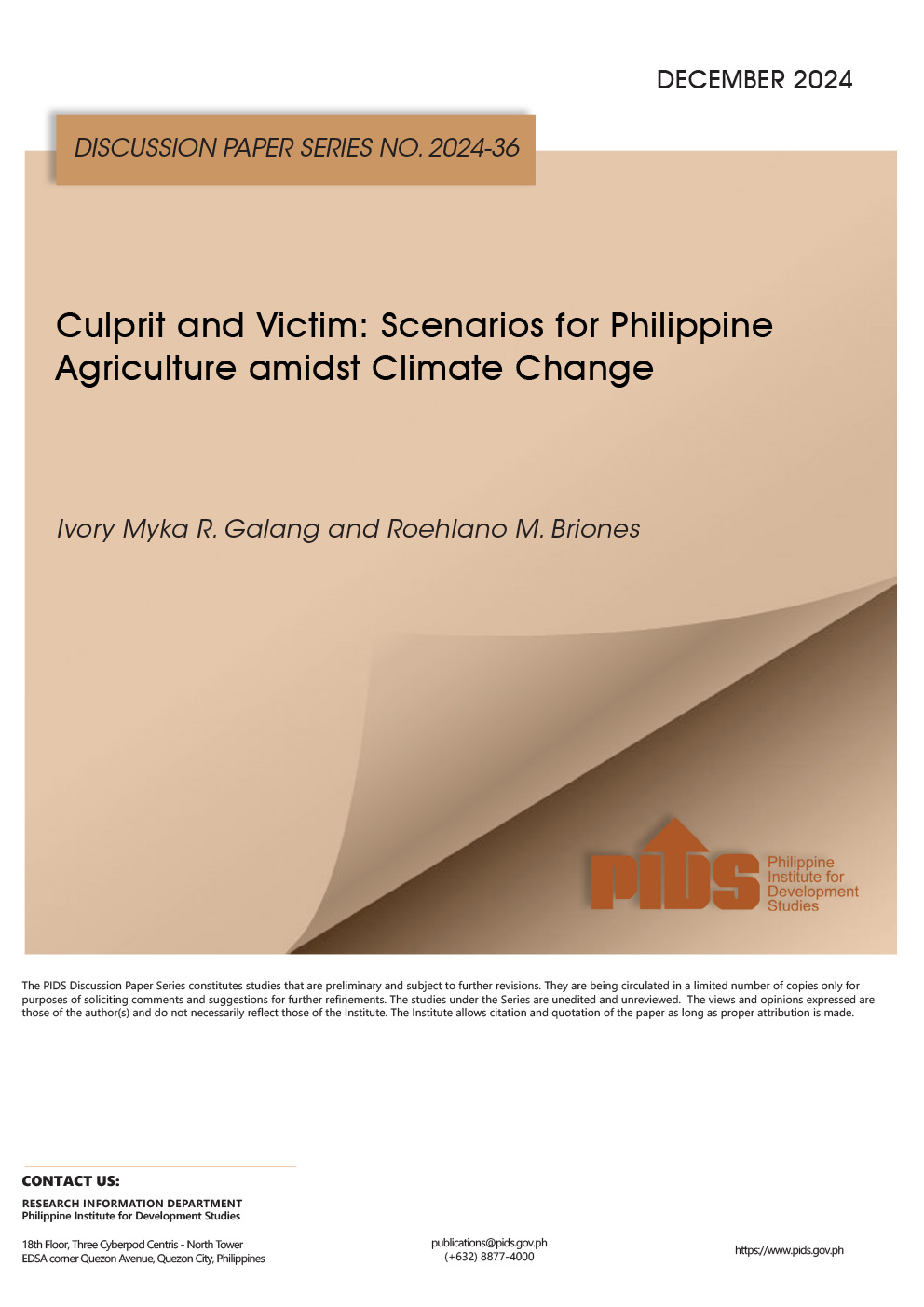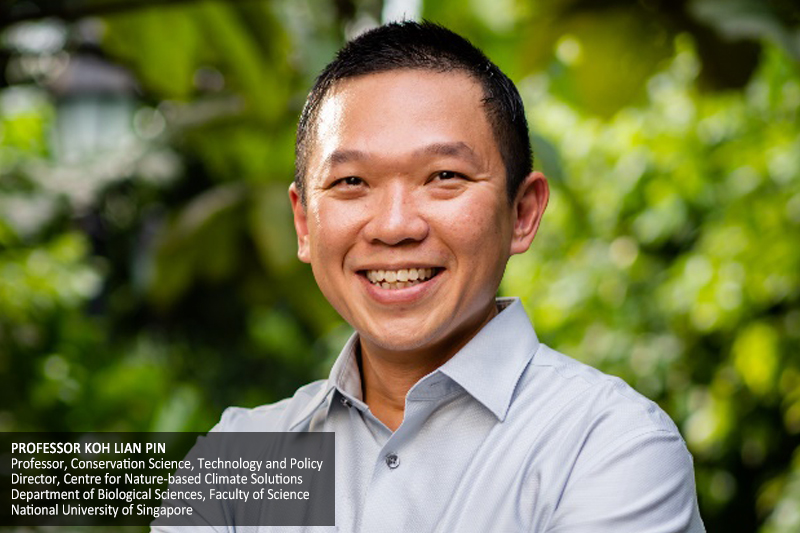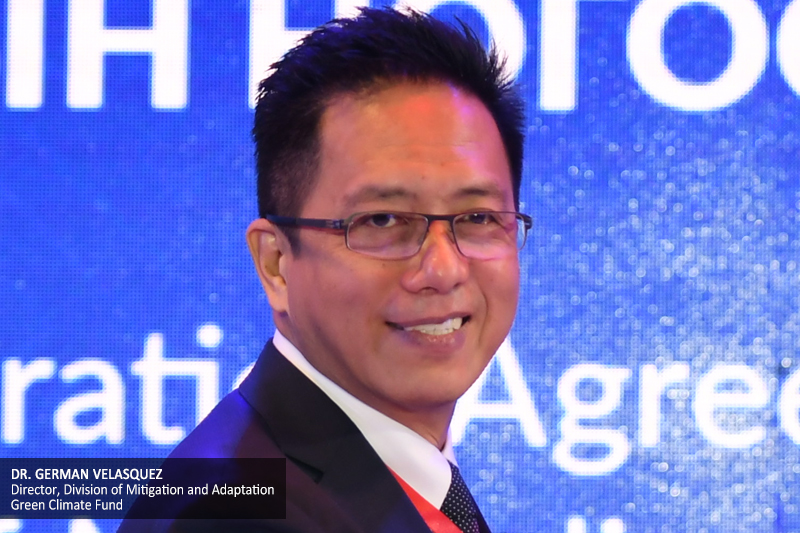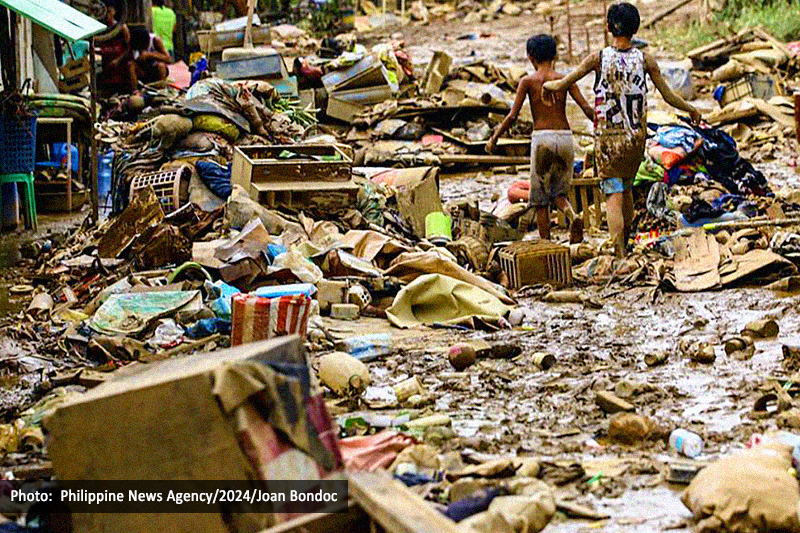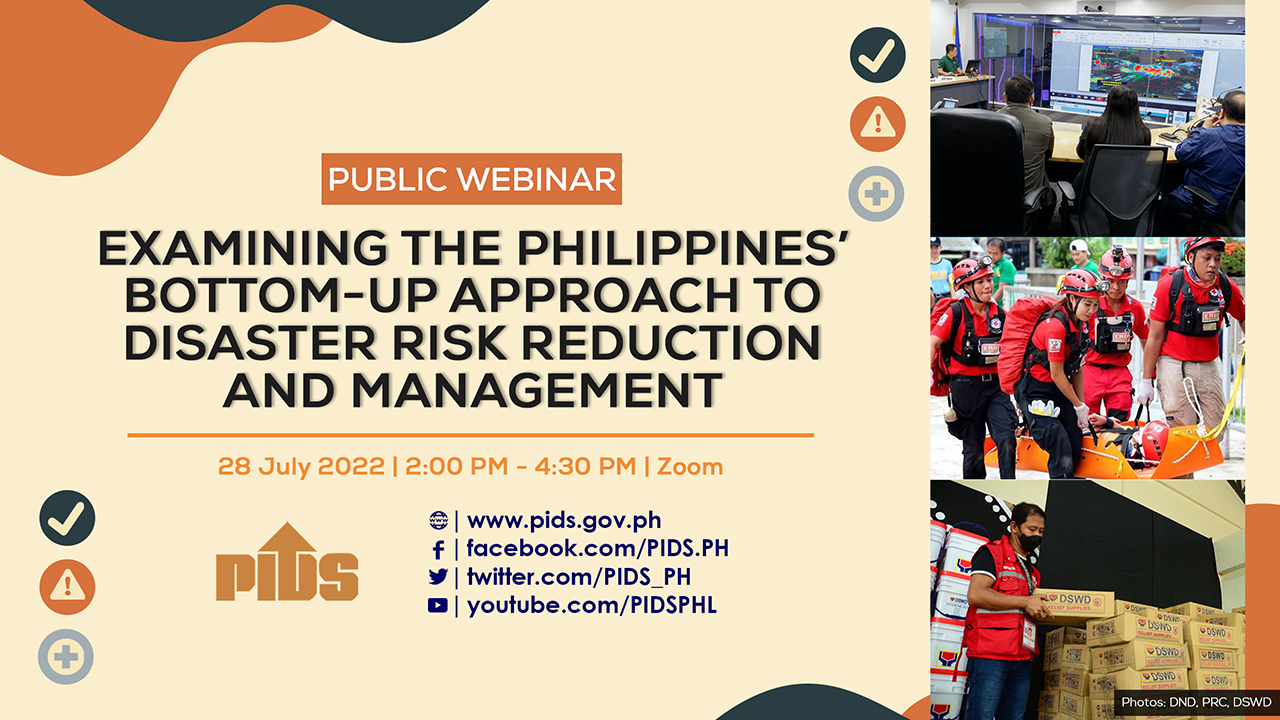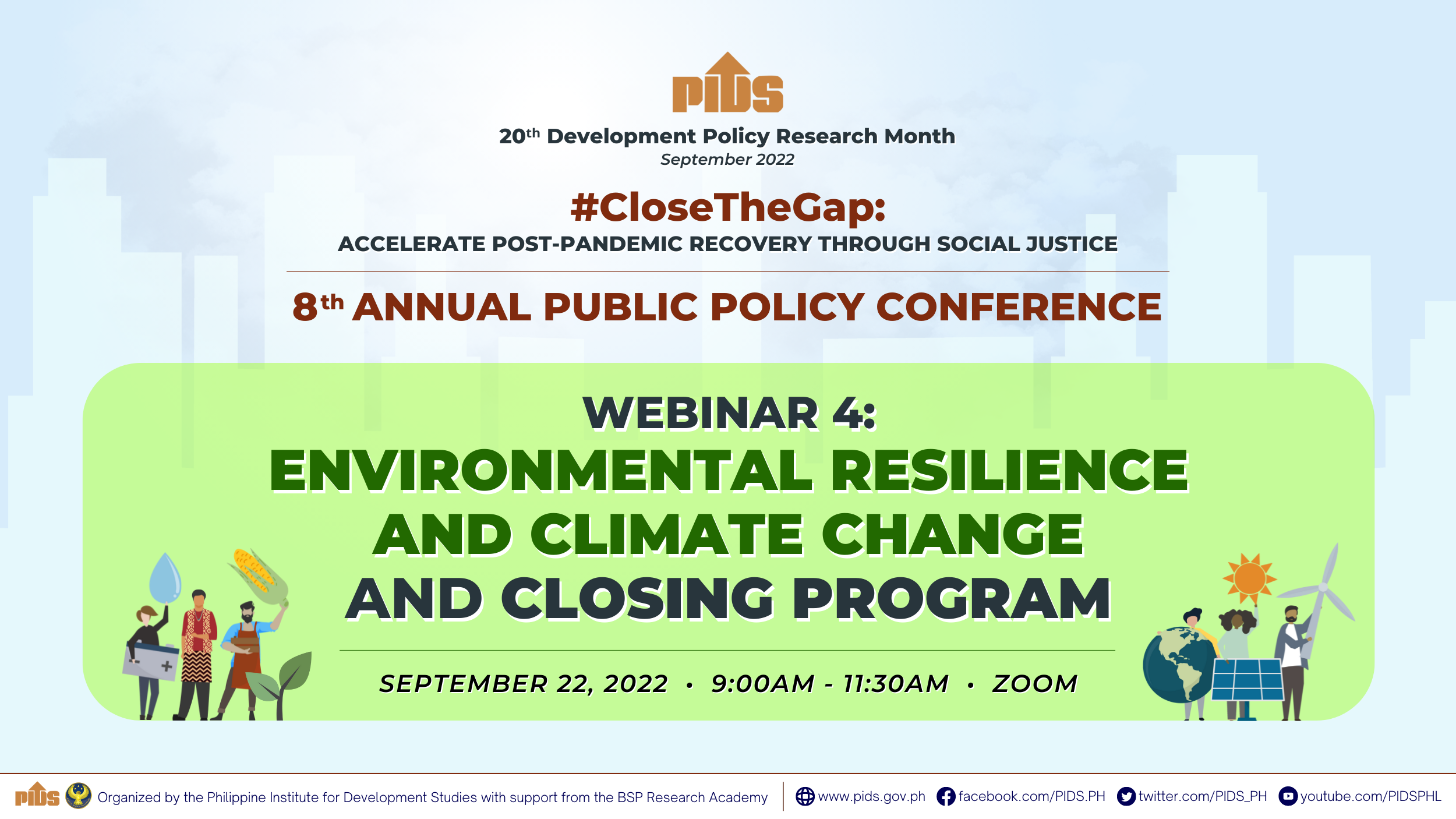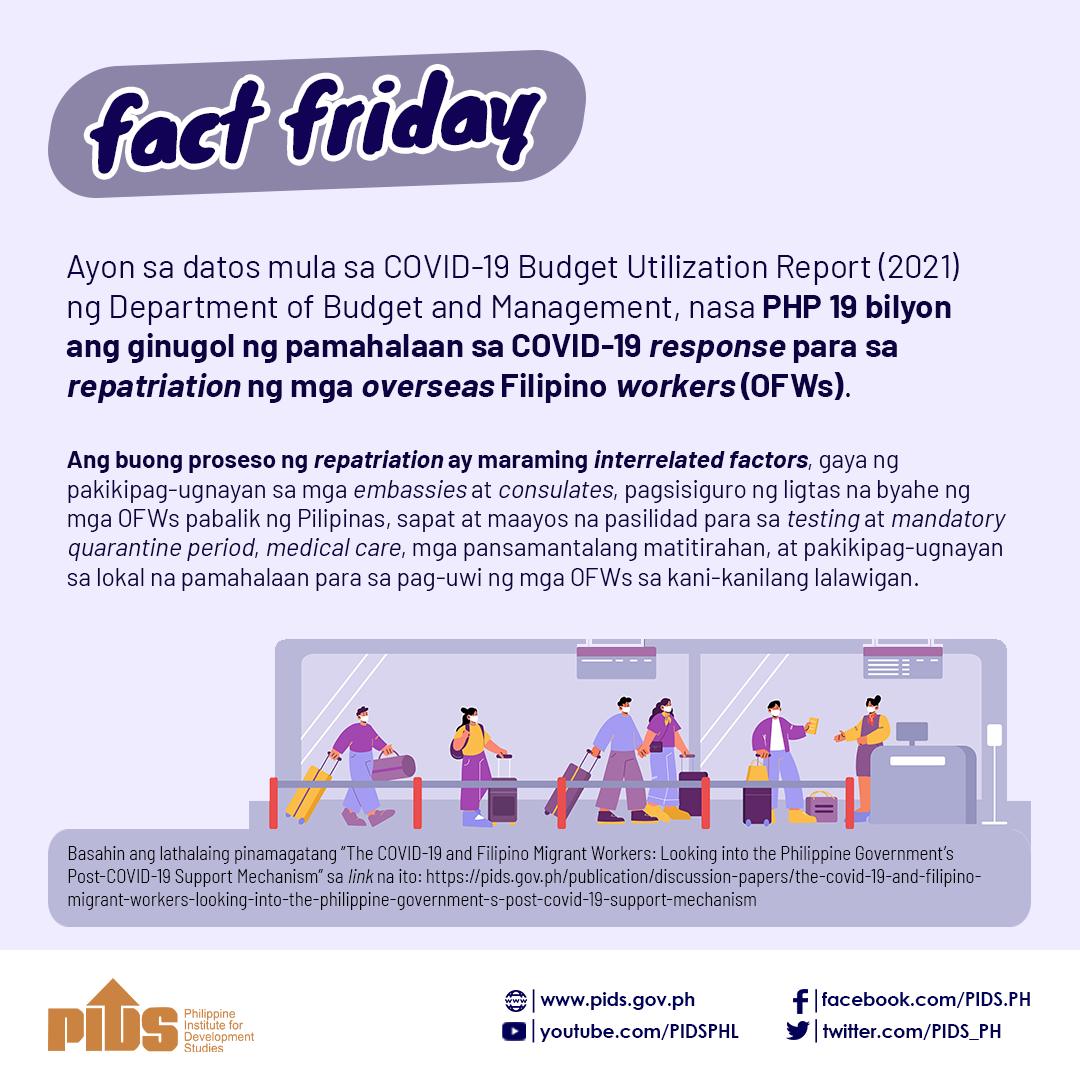
The lockdowns during the pandemic caused a large drop in carbon dioxide (CO2) emissions globally in 2020. However, this positive impact on the environment is unsustainable, and efforts should be focused on promoting green and blue recovery instead, according to a science and technology (S&T) expert.
Speaking at the 19th Development Policy Research Month Virtual Kickoff Forum organized by the Philippine Institute for Development Studies (PIDS), Manila Observatory Senior Research Fellow Rosa Perez emphasized the need to “find ways to reduce emissions without the economic and social impacts of lockdowns as well as solutions that promote health, welfare, and equity”.
Citing data from the Intergovernmental Panel on Climate Change, Perez said that an average of 27 percent drop in CO2 emissions resulted from the global lockdowns. This, however, “had no detectable impact on atmospheric carbon dioxide”, and consequently, “does not affect the climate change status that we are in now”.
“This temporary halt to normal life that we [see] now [as a result of the] successive lockdowns is not enough to stop climate change,” she added.
Perez noted that one way to address climate change without relying on lockdowns is through ‘green recovery’—a widely adopted name for a proposed package of environmental, regulatory, and fiscal reforms to recover prosperity after the pandemic.
“Green recovery will reduce the risk of future pandemics and will help mitigate and adapt to the impact of climate change. It can also create jobs, increase competitiveness, and meet the Sustainable Development Goals,” Perez explained.
She added that green recovery includes exploring opportunities in agriculture, clean energy, urban development, and transportation, among others.
In addition, she tackled ‘blue recovery’, which focuses on investing in sewage and waste treatment infrastructure, coastal and marine ecosystems, mariculture, ocean-based renewable energy, and marine transport.
Perez, a member of the National Resilience Council’s (NRC) technical working group on S&T, emphasized that integrating strategies would be the best way to achieve green and blue recovery.
She enumerated three ways on how this can be done. First is through capacity building, institutionalization, and knowledge generation. Second is through the implementation of targeted policy interventions focusing on green and blue recovery. Third is by identifying sustainable sources of financing for growth opportunities for green and blue recovery.
Perez highlighted the importance of capacitating local government units in implementing these solutions.
She added that the NRC has implemented initiatives to strengthen public-private partnerships to promote S&T-based solutions in addressing climate and disaster risks. “The NRC understood that…the Philippines’ unique pattern of development requires transdisciplinary approaches that necessitate the active participation of different sectors and the communities themselves,” she explained. ###
You may watch the webinar at https://www.facebook.com/PIDS.PH/videos/854765825174584/ or https://www.youtube.com/watch?v=N4Jc3Jcpj54&t=158s.
For more videos of PIDS events, go to https://www.pids.gov.ph/videos.
Speaking at the 19th Development Policy Research Month Virtual Kickoff Forum organized by the Philippine Institute for Development Studies (PIDS), Manila Observatory Senior Research Fellow Rosa Perez emphasized the need to “find ways to reduce emissions without the economic and social impacts of lockdowns as well as solutions that promote health, welfare, and equity”.
Citing data from the Intergovernmental Panel on Climate Change, Perez said that an average of 27 percent drop in CO2 emissions resulted from the global lockdowns. This, however, “had no detectable impact on atmospheric carbon dioxide”, and consequently, “does not affect the climate change status that we are in now”.
“This temporary halt to normal life that we [see] now [as a result of the] successive lockdowns is not enough to stop climate change,” she added.
Perez noted that one way to address climate change without relying on lockdowns is through ‘green recovery’—a widely adopted name for a proposed package of environmental, regulatory, and fiscal reforms to recover prosperity after the pandemic.
“Green recovery will reduce the risk of future pandemics and will help mitigate and adapt to the impact of climate change. It can also create jobs, increase competitiveness, and meet the Sustainable Development Goals,” Perez explained.
She added that green recovery includes exploring opportunities in agriculture, clean energy, urban development, and transportation, among others.
In addition, she tackled ‘blue recovery’, which focuses on investing in sewage and waste treatment infrastructure, coastal and marine ecosystems, mariculture, ocean-based renewable energy, and marine transport.
Perez, a member of the National Resilience Council’s (NRC) technical working group on S&T, emphasized that integrating strategies would be the best way to achieve green and blue recovery.
She enumerated three ways on how this can be done. First is through capacity building, institutionalization, and knowledge generation. Second is through the implementation of targeted policy interventions focusing on green and blue recovery. Third is by identifying sustainable sources of financing for growth opportunities for green and blue recovery.
Perez highlighted the importance of capacitating local government units in implementing these solutions.
She added that the NRC has implemented initiatives to strengthen public-private partnerships to promote S&T-based solutions in addressing climate and disaster risks. “The NRC understood that…the Philippines’ unique pattern of development requires transdisciplinary approaches that necessitate the active participation of different sectors and the communities themselves,” she explained. ###
You may watch the webinar at https://www.facebook.com/PIDS.PH/videos/854765825174584/ or https://www.youtube.com/watch?v=N4Jc3Jcpj54&t=158s.
For more videos of PIDS events, go to https://www.pids.gov.ph/videos.


